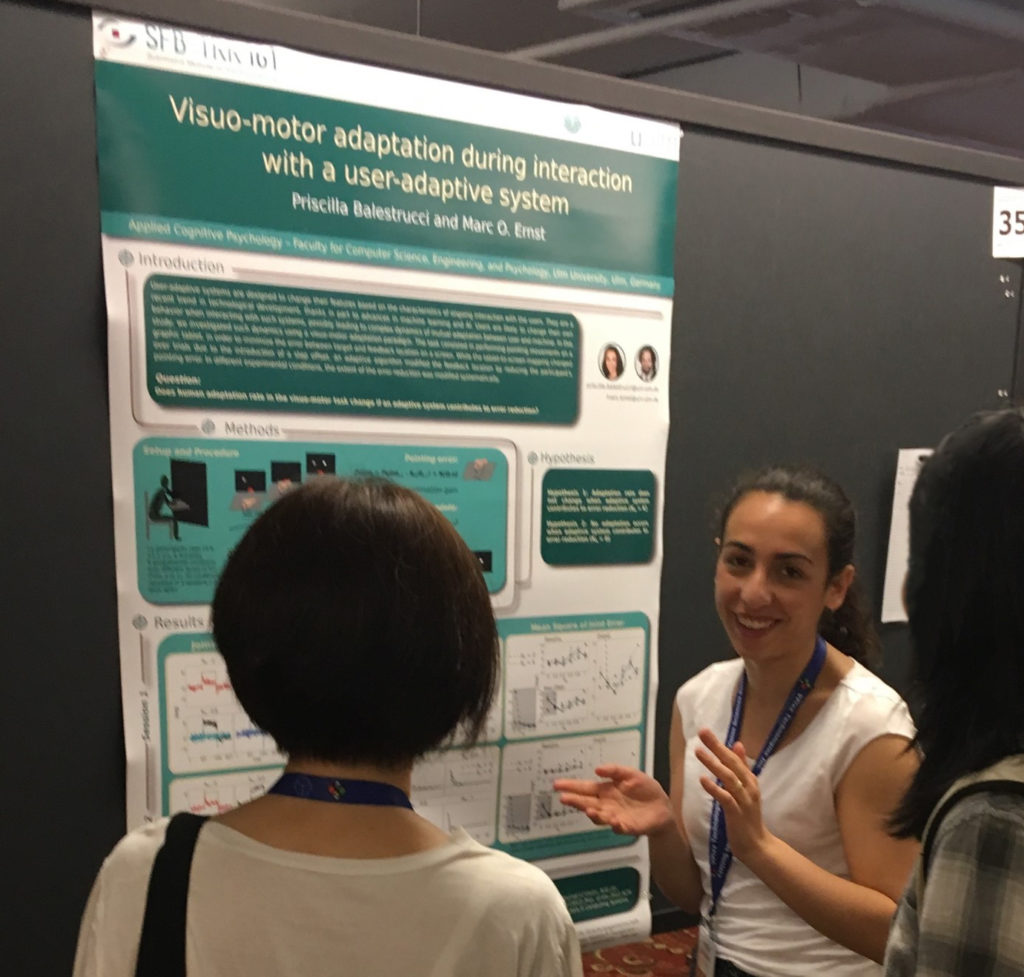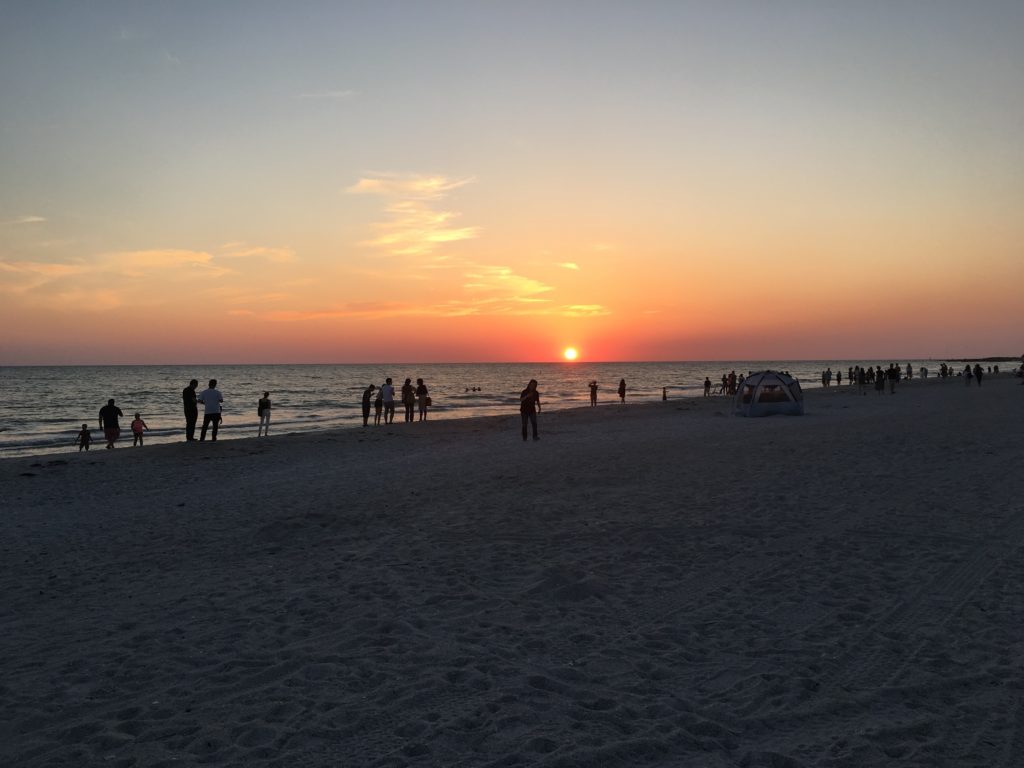From 17 to 22 May 2019, the 19th annual meeting of the Vision Science Society, better known as VSS 2019, took place at the TradeWinds Island Resort in St. Pete Beach, Florida. VSS is one of the largest international conferences in vision science, and every year it hosts more than 3,000 researchers from many vision-related fields, 200 talks and 1,200 posters.
This year, I had the chance to participate in the conference, together with Prof. Marc Ernst and Dr. Charlotte Roy from the department of Applied Cognitive Psychology of Ulm University.
The conference program was incredibly varied, and topics covered a wide range of recent topics in vision science, from the physiology of vision to attention and perception, including discussions on potential applications of recent research. During one of the poster sessions, I presented my own work on visuo-motor adaptation with user-adaptive systems. Understanding the processes of interaction with adaptive multisensory systems is the main research focus of project C05, and I was excited to present some of our recent results. During the session, I ended up engaging in a number of stimulating discussions with other researchers interested in the project, several of whom provided useful feedback.

The keynote talk was given by William T. Freeman from the Massachusetts Institute of Technology. In his very fascinating talk, he outlined different approaches to using computational photography to reveal signals invisible to the naked eye, such as the subtle movements of a heartbeat, vibrations produced by sound, and even images that can “look around” corners. Apart from the main program, several satellite workshops took place in between the conference sessions aimed at the more practical side of conducting research, including networking events for students and postdocs, workshops on how to write grant applications, and hands-on courses for vision science tools. I also participated in the MODVIS (Computational and Mathematical Models in Vision) meeting, a two-day workshop just before the conference. I found the talks and discussions to be especially rich and thought-provoking, and I plan to continue integrating recent work on computational models into my own research. Apart from the scientific program, there were also several social events, which gave us a good opportunity to meet other attendees in a rather unconventional setting – on the beach and under the sun. The events included an opening night reception, a Demo Night, and the Club Vision Dance Party.

At the end of the conference, we also had a chance to visit the surrounding area, where we were surprised to find the Dali Museum in St. Petersburg, which houses the largest collection of Salvador Dali’s work outside of Europe. The spectacular visual illusions in Dali’s paintings seemed to be the perfect way to close a full-week dive into vision science.

